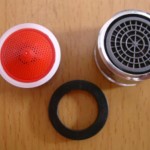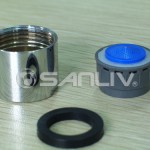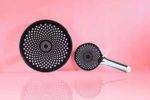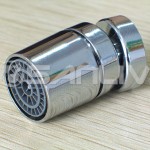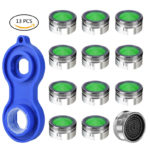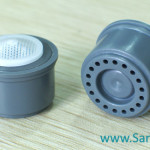Low-flow faucet aerators mix air into your faucet’s water stream to limit the amount of water that slips away. How to buy and install a low-flow faucet aerator? And, most do it without any noticeable difference in water pressure. In other words, you get the same steady stream you’ve come to expect—all while using less water! Installing faucet aerators in your kitchen and bathrooms not only lets you conserve water when you’re rinsing off your razor or finishing up those dinner dishes, but less water also means less energy needed to pump it to your house and less energy to heat it once it’s there.
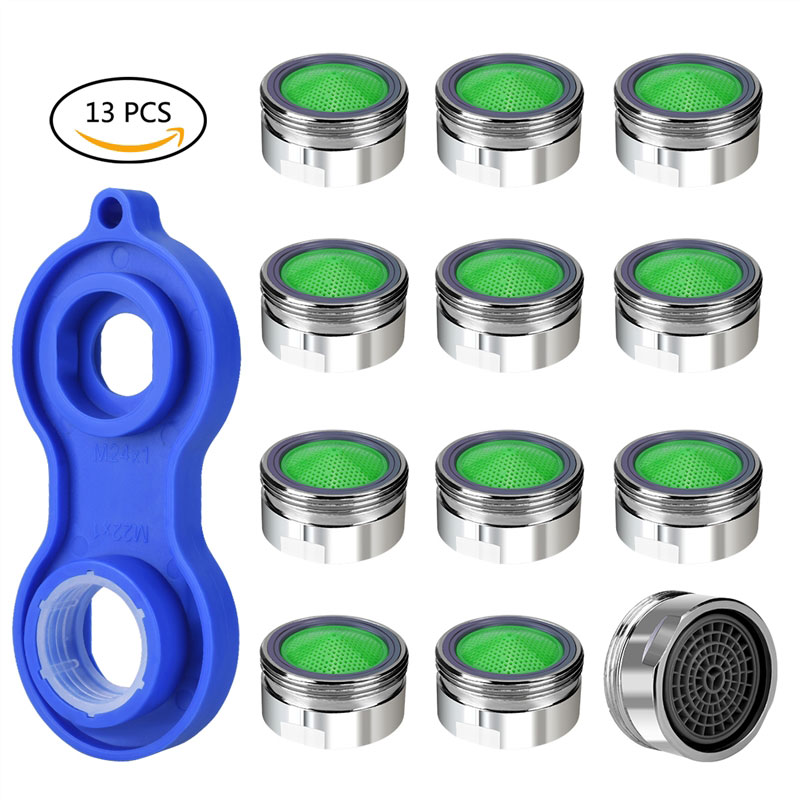
How to install a faucet aerator
Faucet aerators offer one of the biggest water-conservation bangs for your buck. These small metal devices screw onto faucet heads and typically cost between 50 cents and $10. Often they pay for themselves within two months. Most are easy to find at hardware stores, home improvement outlets, and online. Or, if you’re lucky, your city or town may even offer them for free! Here’s how to install one:
- Assess your threads. Most modern faucet heads are threaded to allow you to attach an aerator. You may need to unscrew the current faucet head or aerator (if one is installed) to see the threads. Older faucets may not have threads. In this case, you’ll either have to forgo installing aerators or replace your faucet with a newer model.
- Check flow rates. Because the average faucet spews out more than 3 gallons per minute (gpm), to get a major drop in water usage, you’ll need an aerator with a flow rating of 2.75 gpm or less (preferably 1.5 gpm or even 1 gpm or 0.5 gpm). If you already have aerators installed, check the side to see the imprinted flow rate. Consider replacing those over 2.75 gpm.
- Room by room. You may want an aerator with a higher flow rate in your kitchen (so you’re not waiting endlessly for cooking pots to fill up) than your bathrooms. Consider 2 gpm aerators for kitchen faucets and 1.5 gpm or lower for bathrooms.
- Bring ’em with you. Take along old aerators when you shop for new ones. And, don’t forget the washers. This way you’ll be sure that new aerators fit just right.
- Look for leaks. After screwing new aerators into place, run the water to make sure there are no leaks, especially where aerators connect to faucet nozzles. You may need to tighten further with a wrench (but go easy so you don’t scratch or dent new aerators).
High-efficiency bathroom sink faucets and faucet accessories
The US Environmental Protection Agency (EPA) recently developed WaterSense specifications for high-efficiency bathroom sink faucets and faucet accessories (including aerators). Look for aerators bearing the WaterSense label (which means they use no more than 1.5 gpm). Here are some high-efficiency models to help you start saving water and energy right away:
Creative Energy Technologies offers several aerators, including this 1.5 gpm model. It’s designed to deliver a strong spray while minimizing water usage. A 0.5 gpm model is also available for even more water conservation. Both feature chrome-plating with solid brass bodies and are dual threaded (meaning threads are both on the inside and outside) for ease of installation on most threaded faucets. Price is $6.75 per aerator.
USA Landlord offers a wide assortment of faucet aerators for kitchens and bathrooms. This one, recommended for bathrooms, offers a flow rate of 1.0 gpm. It also features dual threads (male and female threads) that should fit most faucets. Other USA aerators include a swivel model (with both aerated jet and wide spray) that allows you to control where water flows and a tamper-proof model that can’t be removed without a locking key.
This aerator comes in 0.375 gpm, 0.5 gpm, or 0.7 gpm models, allowing you to cut water consumption by 80 percent or more. Features a vacuum booster valve that boosts the intensity of the aerator stream flow by 2.5 times over conventional aerator streams.


